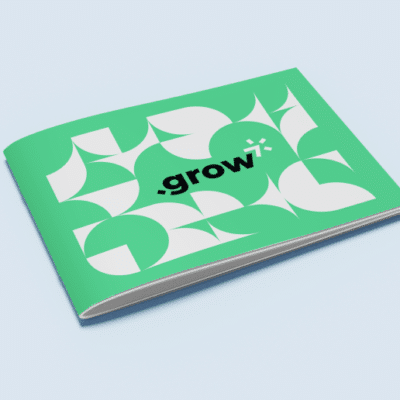
Whether your nonprofit is planning a gala or a virtual fundraiser, effective marketing can be the difference between empty seats and a sold-out success. Nonprofits face distinct challenges in event marketing, including tight budgets and the need to connect with diverse audiences. These hurdles require creativity and a thoughtful approach to make every dollar and effort count.
For example, one often-overlooked but highly effective marketing strategy for nonprofits is leveraging direct mail. While digital marketing is popular in today’s landscape, traditional channels like direct mail remain a personal and tangible way to reach supporters, drive attendance, and amplify event results.
In this guide, we’ll explore the top do’s and don’ts of event marketing to help your nonprofit take attendance and engagement to the next level.
The Do’s of Nonprofit Event Marketing
Focusing on the right strategies can make all the difference when promoting an event. From understanding your audience to integrating direct mail into your outreach, these proven “do’s” will help you create a marketing plan that drives results and supports your mission.
Do: Know Your Audience
Before you can create compelling event marketing materials, you must first understand who you’re trying to reach. Nonprofits often have diverse supporters, from loyal donors to first-time attendees, so tailoring your message is key.
Using your supporter data, segment your audience by characteristics such as:
- Age
- Location
- Income
- Interests
- Engagement history
Also, consider each recipient’s preferred communication channels, such as email, social media, or direct mail, to increase the chances they will engage with your marketing content.
Do: Create a Multi-Channel Marketing Strategy
Since your audience members likely prefer communicating on varying platforms, a successful event marketing plan relies on integrating multiple channels to amplify your message. Combine email, social media, direct mail, and your website to reach your audience wherever they are.
Consistency is crucial—use the same visuals, messaging, and calls to action (CTAs) across platforms to create a cohesive campaign. For example, you might follow up a direct mail piece with an email reminder or reinforce your social media promotions with targeted ads. This multi-channel approach boosts awareness and encourages participation.
Do: Leverage Direct Mail Effectively
In an increasingly digital world, direct mail can cut through the noise and leave a lasting impression on potential attendees.
Create compelling mail pieces that clearly include the event’s:
- Purpose
- Date and time
- Location
- Featured speakers or activities
With a 3.7% response rate compared to 0.62% for all digital channels combined, direct mail can be a game-changer in driving attendance and engagement at your next event. Add QR codes to make it easy for recipients to register or donate.
Do: Follow Up Post-Event
Even after your nonprofit has wrapped up its event, there’s still more to be done. Thoughtful follow-up helps reinforce the impact of your event and keeps your nonprofit top-of-mind with attendees, setting the stage for continued engagement.
Start by thanking participants, donors, and volunteers through personalized messages, such as emails, cards, or phone calls. Share the event’s results, like funds raised or milestones achieved, to show the tangible impact of their support.
The Don’ts of Event Marketing for Nonprofits
While knowing what to do is essential, avoiding common event marketing pitfalls is equally important. Missteps like generic messaging or relying too heavily on digital channels can significantly impact your campaign’s effectiveness.
Avoid these “don’ts” to ensure your event marketing stays on track and prevent wasted resources, missed opportunities, and disengaged audiences.
Don’t: Forget to Personalize Your Outreach
Generic, one-size-fits-all messaging can make your audience feel undervalued and disconnected from your organization. Instead, personalize your outreach by:
- Addressing recipients by name
- Referencing past contributions or involvement
- Tailoring messages to specific audience segments
For example, long-time donors may respond better to impact-focused content, while first-time attendees might need more welcoming and informative messaging. Personalized outreach not only increases engagement but also builds trust and loyalty with your audience over time.
Don’t: Ignore Your Budget
Overlooking your budget can lead to overspending on low-impact strategies or failing to invest enough in critical marketing efforts. Start by creating a detailed budget that outlines all anticipated expenses, including digital ads, direct mail, and other event promotion materials.
Take advantage of cost-saving options, like sponsorships, cross-promotion opportunities, or free digital tools. Allocating your resources wisely ensures you maximize return on investment (ROI) and focus your efforts where they’ll have the greatest impact, even with limited funds.
Don’t: Rely Solely on Digital Channels
While digital marketing is essential, depending solely on it can limit your reach and engagement. Many donors, especially those who are older or less tech-savvy, respond better to traditional methods like direct mail.
By combining digital channels with direct mail and print ads, you can create a more comprehensive marketing strategy. A balanced approach ensures no segment of your audience is left out.
Don’t: Neglect Volunteer and Staff Training
Volunteers and staff are often the face of your nonprofit during events, and their preparedness can significantly impact your success. Without proper training, they may struggle to engage attendees or effectively communicate your message. Provide clear guidance on their roles, from promoting the event to answering attendee questions.
Share an official brand guide they can reference when creating event marketing materials to keep your visuals and messaging consistent across platforms. Equip them with key talking points about your nonprofit’s mission and event details to help them feel confident in every interaction leading up to and during your event.
Event marketing is your nonprofit’s gateway to deeper connections and greater impact. By focusing on key strategies—like understanding your audience, multi-channel outreach, and personal follow-ups—and avoiding common mistakes, you can turn every event into a powerful step forward for your mission.


